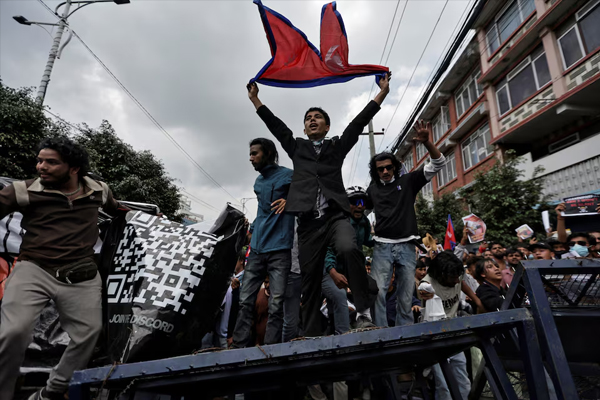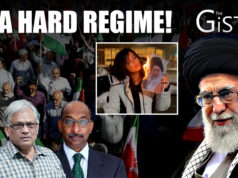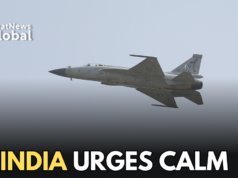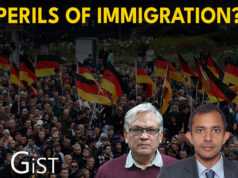
The turmoil in Nepal bears an uncanny resemblance to the anti-government protests that toppled the government of Sheikh Hasina in August last year. She had to flee to India which is her current residence in exile.
But there is nothing to suggest KP Sharma Oli, the ousted prime minister of Nepal, will follow suit. It would be quite ironical if he did so. Oli’s ties with India have been strained by territorial claims and his links with China.
There were reports that Oli was due in Bodhgaya for a meeting with his Indian counterpart Narendra Modi, but his resignation has put paid to that.
What happens now? The protests have been largely leaderless and spontaneous. A key group, Hami Nepal, led by Sudhan Gurung, organized the initial mobilizations. Importantly, they asked all political parties and youth wings to stay away, underscoring the movement’s non-partisan, anti-establishment character.
Even popular young politicians, like Kathmandu Mayor Balendra Shah and Rabi Lamichhane of the Rastriya Swatantra Party, were seen more as allies, not leaders of the movement.
Maj Gen Binoj Basnayat, a retired officer from the Nepal Army and a strategic thinker and writer, told StratNewsGlobal over the phone from Kathmandu, that an interim government is likely to take over although there is no provision for that in the constitution.
Any decision by President Ram Chandra Poudel carries enormous risks given that he himself has been targeted by the mobs. In fact, none of the big names associated with Nepal’s major political parties have been spared.
Nepali Congress leader Sher Bahadur Deuba, who would have succeeded Oli as prime minister next year, has been a target of mob fury with his home reportedly set on fire. His whereabouts are currently unknown although many politicians are believed to fled Kathmandu for the countryside.
Kathmandu International Airport is shut and curfew is in force although defied by tens of thousands.
India is closely watching the situation. Nepal sits at a strategically important location between India and China. Instability in Nepal, especially one that shuts down the only international airport, is a direct concern for India’s border states like Uttarakhand, Sikkim, and Bihar.
In a statement India’s External Affairs Ministry said the Indian government “is deeply saddened by the loss of many young lives. Our thoughts and prayers are with the families of the deceased.
“As a close friend and neighbour, we hope that all concerned will exercise restraint and address any issues through peaceful means and dialogue.”
The statement with no reference to the ousted political class, was clearly addressed to the young people in the streets. At all costs, India does not want to be linked with the ousted politicians regarded as corrupt, incompetent and living off a dysfunctional political system.
Since becoming a republic in 2008, Nepal has seen the same set of ageing political elites, all over 70, repeatedly rotate power among each other with no real reform. Their children enjoyed lavish lifestyles while most young Nepalis struggled to find jobs or afford education.
A World Bank report notes that 82% of Nepal’s workforce is in informal employment, and the majority of young people are forced to migrate abroad for work.
Ironically, even as the ban was the catalyst, social media was also the engine that mobilized thousands: Protestors used VPNs and alternative apps like TikTok and Viber (which were not banned) to organize.
The use of hashtags like #NepoBabies and #FreeNepalInternet reflected a digital-native protest language. Many activists live-streamed clashes, attracting global attention before the government attempted to black out coverage.
India should take note. A rising, politically conscious digital-native generation across South Asia is showing that it’s willing to mobilize around transparency, digital rights, and anti-corruption — issues that are gaining traction in India as well.
With Nepal in political flux, China may attempt to increase its influence. India, which has close cultural and economic ties with Nepal, may need to re-engage more actively to support democratic processes and regional cooperation.
If the crisis worsens, it could lead to increased cross-border migration into India, a pattern historically observed during Nepal’s internal upheavals.
Nepal’s Gen Z protests are more than a domestic issue as they represent a broader generational rift playing out across many South Asian democracies.
India and other neighbouring nations, would do well to view Nepal’s youth uprising not just as a local disturbance, but as a preview of political currents that could reshape the region in the years ahead.




